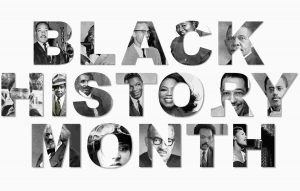Discussion to explore Hope integration
By Submitted, 02/14/19 9:16 AM
HOPE – The 1969-1970 school years represented a turning point in public education in Hope as school integration was implemented across the Hope Public Schools. That critical juncture will be the focus of a panel discussion in a Black History Month presentation by the Hope Public Schools on Thursday, Feb. 21.
“Hope Public Schools: A Turning Point” will be the theme for the evening, beginning at 6 p.m. in the Hope High School Auditorium.
A panel of former Hope school students and former Hope educators who came together to effect the changes in local schools fostered by the integration of public schools in Arkansas will discuss their experiences and answer questions from current social studies classes about that period.
Hope Superintendent Dr. Bobby Hart said the public is invited to attend the discussion.
“It is important to our future that we have an understanding of our past,” Dr. Hart said. “Our district is a diverse one and our diversity should be celebrated and recognized. The views that our panelists will have present us with a look at what our community and school system were like during that period. The conversation is being held to celebrate our past and to help us improve for our future.”
The 1970 Hope High School yearbook put the turning point of integration into perspective.
“The merger of Yerger High School with Hope High School in September brought the total student count to 933,” the publication states. “It takes 51 teachers, 2 administrators, and 6 staff members to carry on the business on the hill.
“With unification came improvements: such as Department setup with related subjects located in one area,” the yearbook states. “For the first nine week the auditorium became a classroom until the completion of the five-classroom building adjoining the annex (former HJHS).”
There are typical student laments that cross all lines.
“Student parking, always a problem, has been pushed to the outside; behind the field house and behind Dr. Branch’s house,” the yearbook states. “Seven of the busses land at the old parking lot at 8:15 a.m. daily. You have to experience this event to understand.”
But, it is Principal Joe Barentine’s opening day statement that concludes the short essay.
“Principal Barentine’s words at the opening session of school are becoming a reality according to some observers: ‘Hope High School has the potential to be the best in the state,’” the yearbook notes.
Prior to 1969, public schools in Hope, Hempstead County and much of Arkansas were segregated between black and white student bodies.
The black education system in Hope, under the auspices of the county school board system then in place, was originally embodied in the Yerger School system, which originated in 1886 from the Shover Street School for black children established by Professor Henry Clay Yerger. Eventually, the Yerger High School campus was established on five acres of property which is now the Yerger Middle School campus, purchased in 1931 by the local school board. After World War II, Will V. Rutherford, principal of the H.C. Yerger School from 1949 to 1969 became the first principal of Yerger Middle School after integration. It was during Rutherford’s tenure that the H. C. Yerger School saw its most rapid expansion with the addition of a high school annex, lunchroom, adult and veteran’s programs, vocational building and construction of Shover Street Elementary School. The high school was accepted into full accreditation by the North Central Association of High Schools and Colleges, and became a member of the organization in March, 1958, as a result of Rutherford’s leadership.
During the period from 1931 forward, the white education system in Hope was operated from three campuses at Brookwood Elementary School, later Edith Brown Elementary, Garland Elementary School, and a newly-constructed Hope High School, the core of which remains in use today.
The entire school system, black and white campuses, was overseen by then Superintendent James H. Jones, under the direction of school board members George Frazier, Dr. Herbert Rogers, Dr. Forney G. Holt, Dr. Jud B. Martindale, Dr. Sam W. Strong Jr., William E. Tolleson, and William R. Routon, according to the 1969 HHS yearbook.



